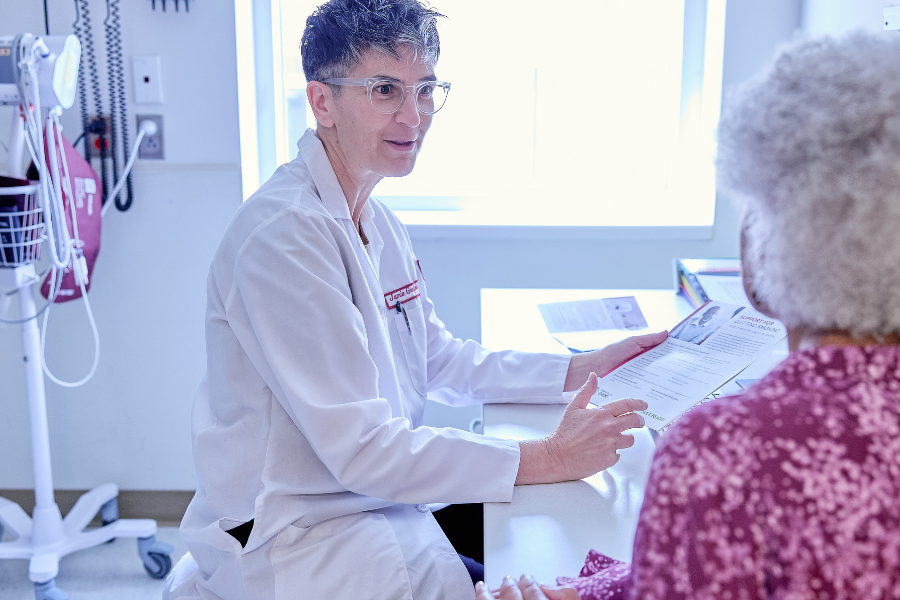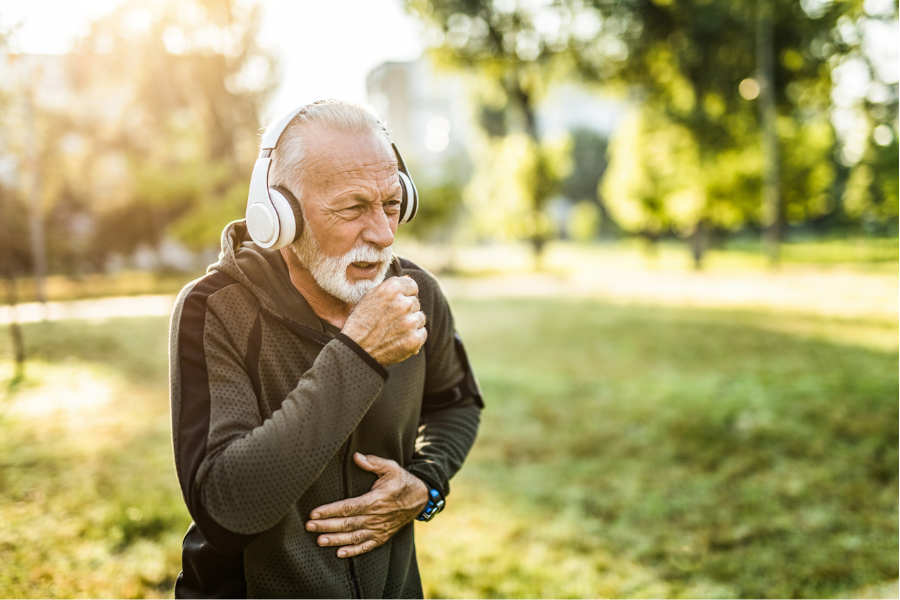Chronic obstructive pulmonary disease (COPD) is a chronic condition that causes inflammation in the lungs, obstructing air flow and making it difficult to breathe. A COPD flare-up indicates a worsening of the condition and may also increase your risk of further lung damage. Identifying your COPD triggers and learning the early warning signs of a flare-up can help you better manage your condition and protect your health.
Are You Having a COPD Flare-Up?
In addition to COPD, many illnesses cause symptoms that affect breathing, including the flu, allergies, pneumonia and COVID-19. But there are some ways to determine what may be causing your symptoms. The flu and pneumonia can cause a phlegmy cough, just like COPD, while wheezing and shortness of breath more often occur if you have allergies. When allergies trigger breathing difficulties, taking allergy medication or avoiding allergens will usually improve your symptoms in a day or two.
COVID-19 also affects the lungs, causing breathing troubles that range from mild to severe. If your breathing issues and coughing are accompanied by chills, fever, fatigue, congestion, runny nose, sneezing or sore throat, you may have COVID-19 or the flu rather than a COPD flare-up. It can be difficult to tell which virus is responsible for your symptoms, as both illnesses can cause similar symptoms. Loss of taste or smell is one clue that you may have the coronavirus instead of the flu. Keep in mind, however, that the flu, pneumonia, COVID-19 and other respiratory illnesses can cause serious lung and breathing problems and may trigger a COPD flare-up.
8 Ways to Reduce Your Risk of a COPD Flare-Up
These tips can help you manage your COPD and prevent flare-ups:
1. Recognize COPD flare-up signs.
You may cough more, produce more mucus, feel tired, find deep breaths more difficult than usual, experience headaches in the morning, sleep poorly or notice that your ankles or legs are swollen at the beginning of a flare-up. Follow your COPD treatment plan if you notice any of these signs.
2. Stay up to date on vaccinations.
You’re more likely to develop severe, potentially life-threatening complications if you have COPD and get the flu or pneumonia. Flu and pneumonia vaccines offer simple ways to lower your risk.
3. Stay away from smoke and pollutants.
Smoke, whether it’s from a cigarette or a campfire, may trigger a flare-up. Pay attention to the air quality forecast for your area. If pollution is high, stay inside.
4. Avoid crowds.
It’s much easier to catch a virus in crowded areas. Stay away from congested places and reschedule visits with friends or family members if they’re feeling ill. This is especially important now that COVID-19 is so easily spread when people are in close contact with one another.
5. Wear a mask.
Covering your mouth and nose with a mask and practicing social distancing will help you reduce your risk of developing the flu, coronavirus and other respiratory viruses.
6. Don’t touch your face.
Many people don’t realize just how often they touch their faces. In an Australian research study, medical students touched their faces 23 times in just one hour. Unfortunately, germs can easily enter your body if you touch a contaminated object and then touch your mouth, nose or eyes. Keeping your hands away from your face, in addition to frequent hand washing or use of hand sanitizer, may help stop you from getting sick.
7. Embrace healthy living.
Don’t smoke, use alcohol only in moderation and choose foods that offer the nutrients you need for good health. Lean meats, poultry, fish, whole grains, fruits and vegetables are the best choices for a healthy diet. Regular exercise is also important if you have COPD. According to the American Lung Association®, moderate exercise can improve shortness of breath and the way your body uses oxygen.
8. Don’t wait to call your doctor.
If worsening symptoms don’t improve within a day or two, call your doctor. If you have chest pain, severe shortness of breath, an inability to speak in full sentences, confusion or blue lips and/or fingers, call 911 or ask someone to take you to the emergency room.

